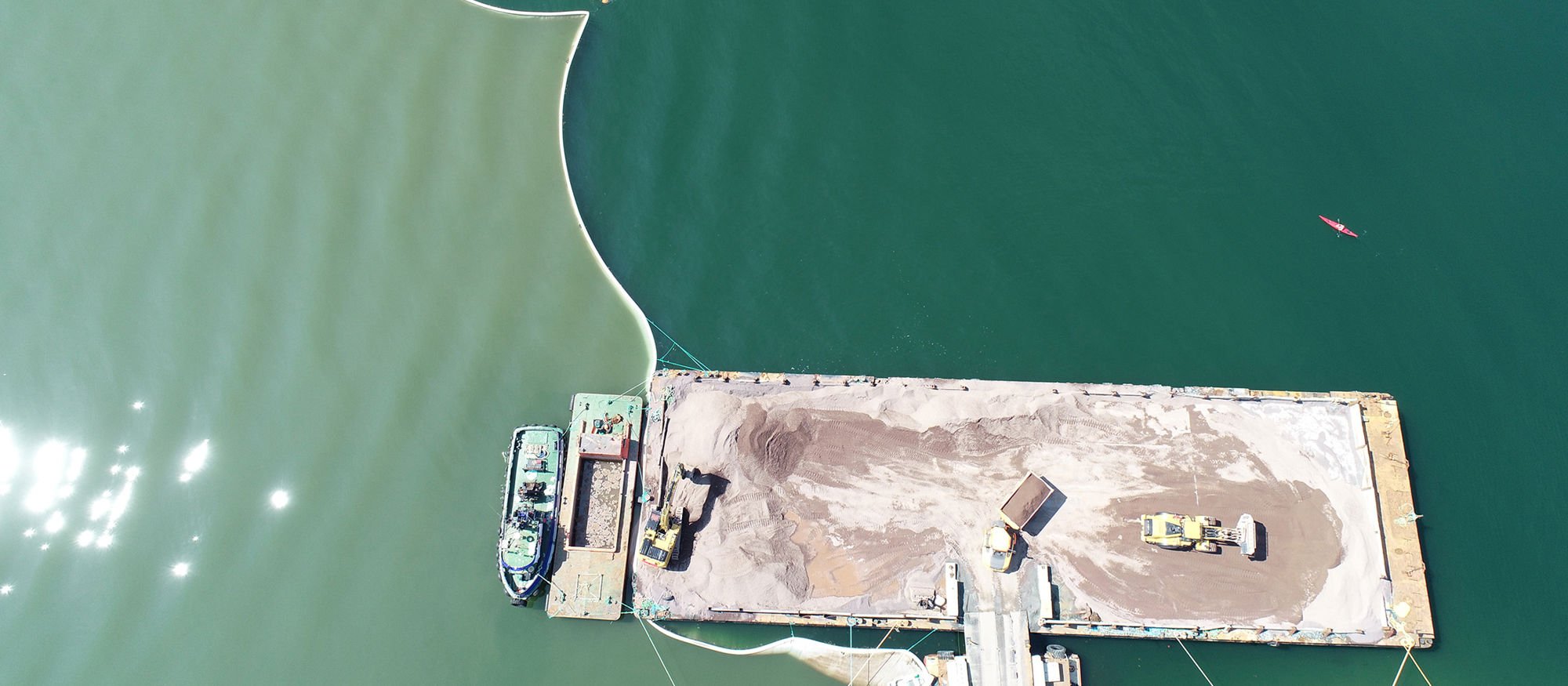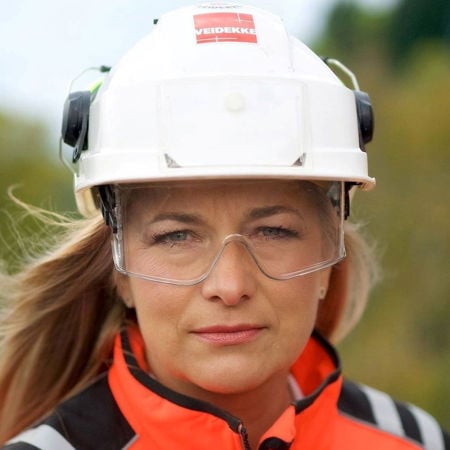That is why we have introduced climate budgets for all enterprises and are devising plans for how to reduce climate impact throughout the value chain (scopes 1, 2 and 3). The Norwegian enterprise and parts of the Swedish enterprise hold accreditation to ISO 14001.
Environmental policy
Our environmental policy is based on the UN Global Compact’s principles for responsible business. The policy states that Veidekke should be an industry leader in the green shift through:
Attitudes
take a precautionary approach to environmental challenges, promote environmental accountability and encourage development and use of environmentally friendly technology
Actions
- operate in accordance with the Paris Agreement
- work systematically with climate risk
- provide environmental expertise that adds value for the customer, and challenge customers to reduce their environmental impact
- prevent pollution, safeguard biodiversity, reduce the consumption of resources and take steps to promote the circular economy
- maintain an overview of how we affect the environment and reduce our environmental impact by improving processes and products
- consider the environment at all stages in the production line, including planning, execution and procurement
- invest in innovation and solutions to support the green shift
- comply with laws, regulations and our own requirements
- contribute beyond our own business: in industry organisations, education, research and development, and in interaction with the authorities and policymakers Actions
Impact of climate on Veidekke (climate risk)
Climate change involves both risks and opportunities. Increasingly frequent instances of extreme weather may alter the criteria for Veidekke’s operations. At the same time, both more stringent requirements from the authorities and new technology are leading to an increase in demand for green products and services. Veidekke has identified how climate risk will impact us going forward, and we will continue to do this.
Veidekke’s impact on the climate
Veidekke’s approach is based on the Paris Agreement, and was an early adopter of some very ambitious goals for reducing greenhouse gas emissions from our own operations. These goals are now set to achieve net-zero by 2045, which involves cutting down greenhouse gas emissions from both our own operations and the value chain to net zero. We have compiled greenhouse gas budgets for our operations in line with this goal, with quarterly reporting and annual follow-up. We are also committed to defining science-based targets (SBTi) for net-zero for the entire value chain (scopes 1, 2 and 3). Streamlining, new technology and a transition to fossil-free energy sources provides the greatest potential for reducing Veidekke’s greenhouse gas emissions.
Veidekke’s annual accounts citing greenhouse gas emissions are verified by DNV.
Environmentally friendly materials and products
We seek to prevent waste and limit emissions, pollution, waste and use of resources in our building and construction projects. We use sustainable materials such as solid wood, low carbon concrete and more sustainable asphalt, and we are committed to ensuring that what we build will last a long time and that the resources we use are renewable. For instance, we do not permit tropical timber to be used in our own projects, we advise customers against using tropical timber, and we ask to see FSC or PEFC certificates for all timber products. More and more of our buildings and installations are receiving third-party environmental classification to recognised national and international standards.
Information on how we work with climate and the environment is presented in the Veidekke sustainability report.
The greatest potential for reducing Veidekke's greenhouse gas emissions lies in efficiency, new technology and the transition to fossil-free energy sources.





